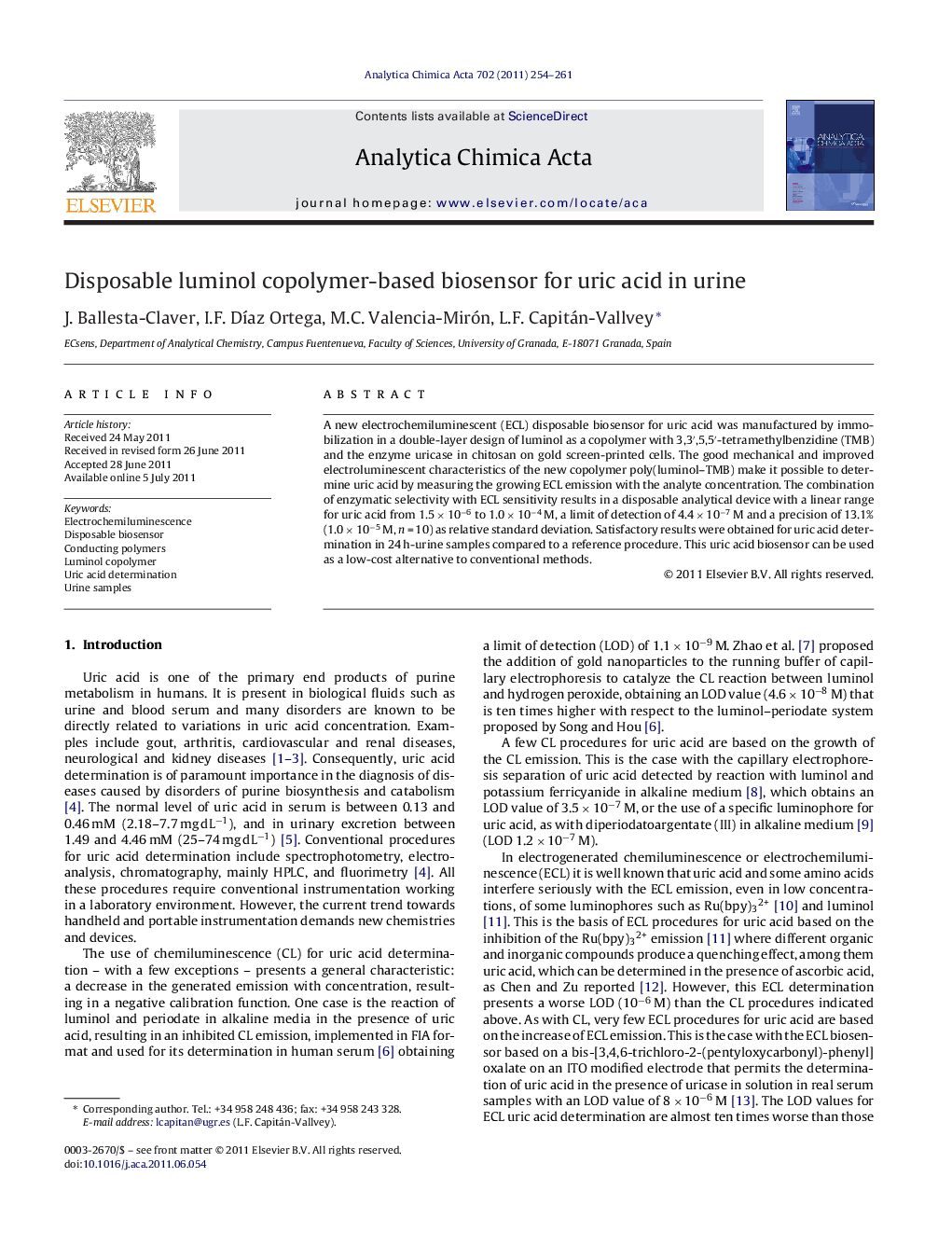| Article ID | Journal | Published Year | Pages | File Type |
|---|---|---|---|---|
| 1166831 | Analytica Chimica Acta | 2011 | 8 Pages |
A new electrochemiluminescent (ECL) disposable biosensor for uric acid was manufactured by immobilization in a double-layer design of luminol as a copolymer with 3,3′,5,5′-tetramethylbenzidine (TMB) and the enzyme uricase in chitosan on gold screen-printed cells. The good mechanical and improved electroluminescent characteristics of the new copolymer poly(luminol–TMB) make it possible to determine uric acid by measuring the growing ECL emission with the analyte concentration. The combination of enzymatic selectivity with ECL sensitivity results in a disposable analytical device with a linear range for uric acid from 1.5 × 10−6 to 1.0 × 10−4 M, a limit of detection of 4.4 × 10−7 M and a precision of 13.1% (1.0 × 10−5 M, n = 10) as relative standard deviation. Satisfactory results were obtained for uric acid determination in 24 h-urine samples compared to a reference procedure. This uric acid biosensor can be used as a low-cost alternative to conventional methods.
Graphical abstractFigure optionsDownload full-size imageDownload as PowerPoint slideHighlights► Offering a biosensor for uric acid in urine based on the increase of ECL emission with analyte concentration. ► Presentation of a better ECL luminophore based on the formation of a copolymer of luminol. ► Preparation of a luminol copolymer by potentiodynamic mode using 3,3′,5,5′-tetramethylbenzidine. ► Low-cost alternative for the determination of uric acid in 24-h urine samples.
